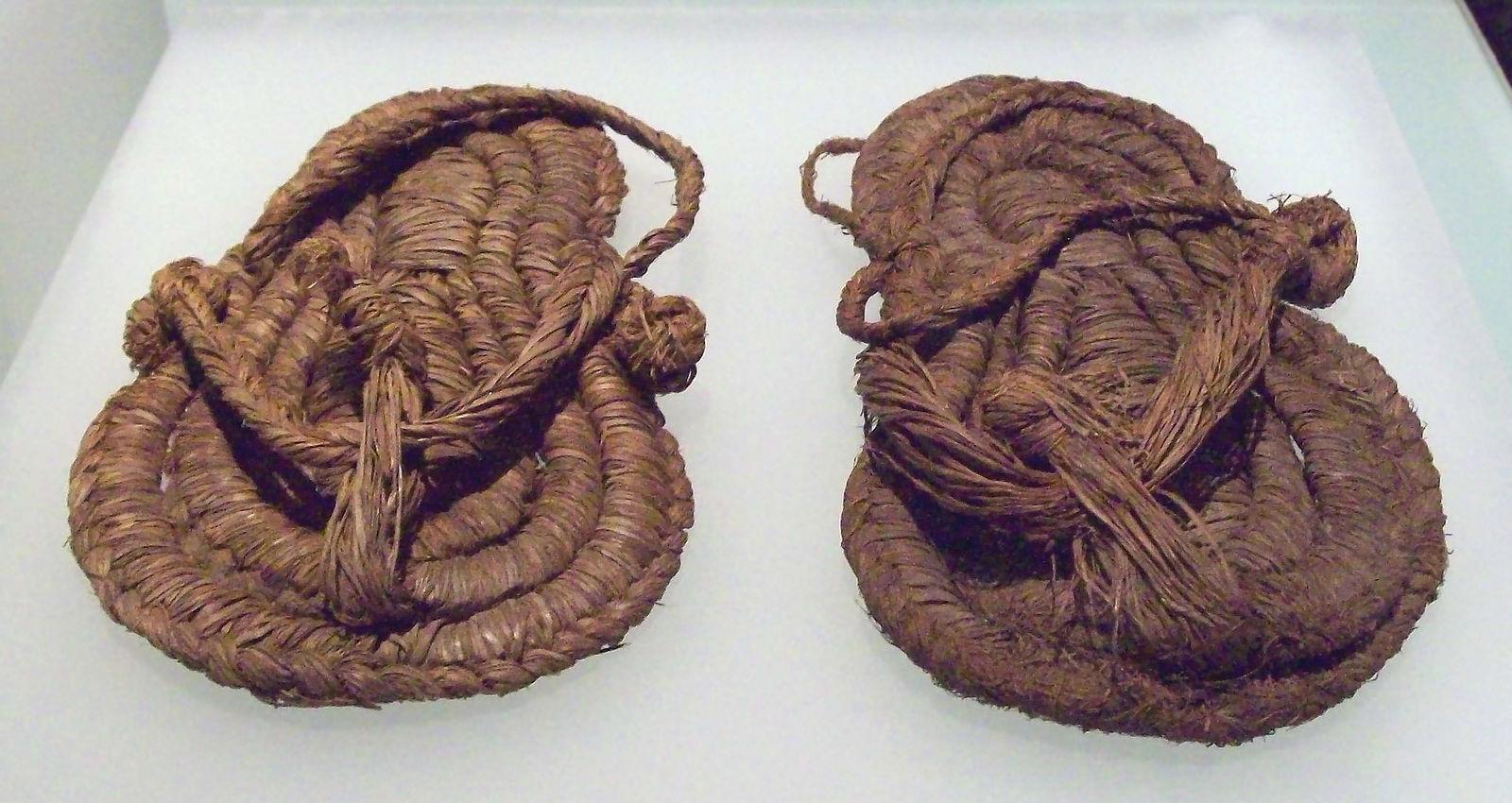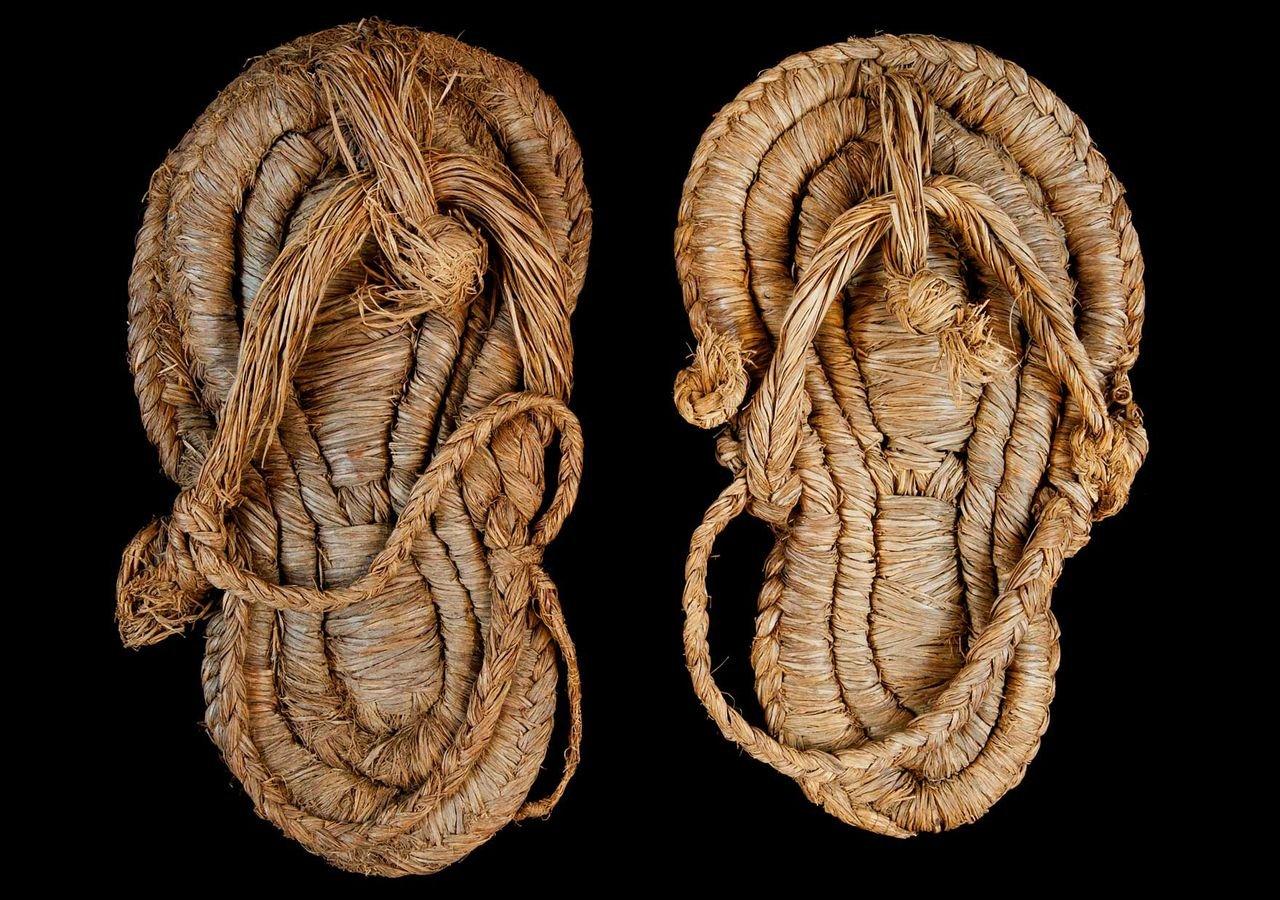Sandals Crafted from Esparto Grass Found in Cueva de los Murciélagos, Spain, Dating Back to 5200-4800 BC

**Unveiling Ancient Footwear: The 7,000-Year-Old Esparto Grass Sandals of Cueva de los Murciélagos**
In the realm of archaeological discoveries, few findings evoke as much fascination and curiosity as ancient footwear.

Recently, a remarkable pair of sandals dating back 7,000 years has captured the attention of historians and enthusiasts alike. Crafted from esparto grass, these sandals offer a rare glimpse into the lives and craftsmanship of our distant ancestors.
Discovered in the Cueva de los Murciélagos (Cave of the Bats) in Spain, these sandals are estimated to have been made between 5200 and 4800 BC, during the Neolithic period. The cave, located in the province of Granada, has long been a treasure trove for archaeologists, revealing insights into the daily lives of prehistoric communities that once inhabited the region.

What makes these sandals particularly intriguing is not just their age, but also the materials from which they were fashioned. Esparto grass, a type of tough, wiry plant native to the Mediterranean region, was commonly used by ancient civilizations for various purposes, including basketry and rope making. However, the meticulous craftsmanship required to weave this fibrous material into functional footwear speaks to the ingenuity and resourcefulness of our ancestors.

The discovery of these sandals sheds light on the lifestyle and activities of the people who lived in the area millennia ago. The presence of footwear suggests a level of mobility and adaptation to different terrains, indicating that these ancient individuals were engaged in activities beyond the confines of their settlements. Whether they were foraging for food, tending to livestock, or engaging in trade and social interactions, these sandals would have been essential for protecting the feet and facilitating movement across diverse landscapes.
Moreover, the preservation of these sandals in the cave’s environment is a testament to both the durability of esparto grass and the unique conditions within the cave that favored their survival. Over the millennia, layers of sediment gradually enveloped and protected the sandals, shielding them from the ravages of time and preserving them for future generations to discover.
The significance of this discovery extends beyond its archaeological value. It offers a tangible connection to our ancient past, reminding us of the resilience, creativity, and adaptability of early human societies. As we marvel at these 7,000-year-old sandals, we are invited to contemplate the enduring legacy of the past and the enduring quest of humanity to understand and navigate the world around us.











